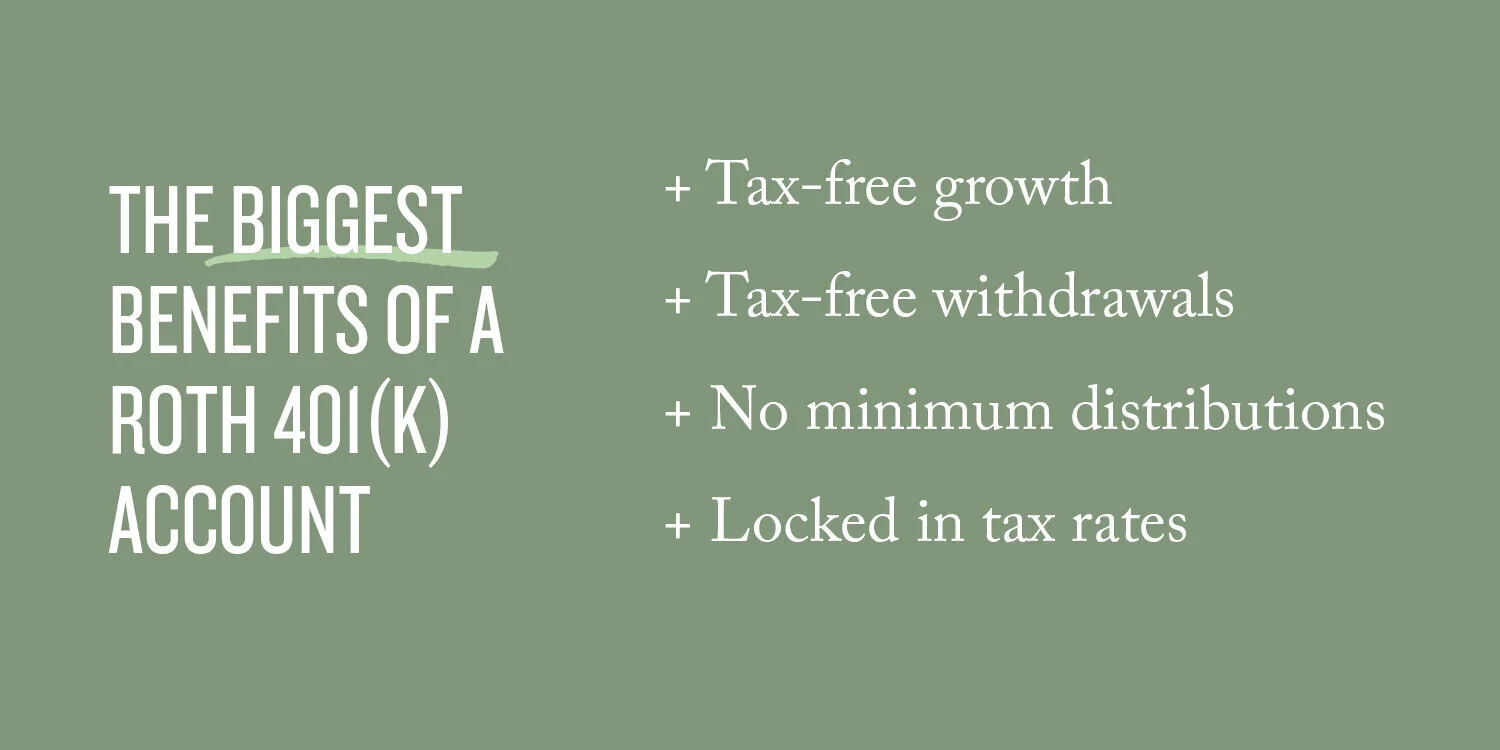Two Ways to Join the Roth Club
Full transparency: I am a Roth enthusiast.
If you are reading this article, it’s likely that we have already spent some time reviewing the benefits of Roth together and you have sensed some of my fervor. While the excitement is real, the concept of saving dollars in tax-sheltered accounts like an IRA, 401(k), HSA, or 529 account is complicated to grasp. With that said, I am offering some written advice about Roth accounts for my fellow visual learners.
Before you read on, here is an outline of the two different ways to save Roth.
Roth IRA
Contribution limit: $6,000 per year (7,000 if you are ages 50 and older)
Eligibility: Single tax filer with 2021 income less than $140,000 or Married filed jointly with 2021 household income less than $206,000
Roth 401k
Contribution limit: $19,500 per year ($26,000 if you are ages 50 and older)
Eligibility: All employees can contribute up to $19,500 regardless of your income and salary.
Employer match: Employer contributions are always pre-tax. If you contribute Roth inside your 401(k) plan you will still receive your pre-tax employer contributions. This is important! People are commonly surprised to learn that 401(k) accounts have Roth inside them.
401(K) ACCOUNT – TWO SAVINGS TYPES UNDER THE SAME UMBRELLA
In summation, if your annual income is less than $125,000 (single filer) or $198,000 (married filed jointly) then you could save up to $25,500 in Roth accounts for the year 2021. The math is here:
HIERARCHY OF ROTH
What should you do if you have access to save Roth inside your 401(k) account but are also eligible to make Roth IRA contributions? Which account should you actively contribute to this year?
First, we recommend that you contribute enough to your Roth 401(k) account to receive your employer match (if applicable). For example, if your employer match is designed so that if you save 5% your employer will contribute 4%, then we recommend you meet the 5% savings rate to take advantage of the free money.
If you can still save additional dollars, use the Venn Diagram and these two examples to help formulate your decision.
MEET MICHAELA, AGE 29, SINGLE TAX FILER
Michaela, like many 29 year-olds, just started a job at her fourth employer in 8 years. Let’s imagine that she just enrolled in her current 401(k) plan which has a save 4%, get 4% employer match structure. She has also noticed her total savings and checking account balances have grown over the past year. As a result, she wants to set aside additional dollars to invest for the future, but also has some concerns about possibly needing access to the dollars in the coming years. Michaela could easily increase her 401(k) contributions to above 4%, but she decides to open a Roth IRA instead because of the flexible distributions. For Michaela, the hierarchy of her Roth savings is as follows:
MEET MARTIN, AGE 40, MARRIED, JOINT TAX FILER
Martin is busy juggling their full-time job, building a deck in their backyard, and spending time with their energetic family. They are currently saving 8% Roth into their 401(k) plan which equates to $7,500 annually. Martin is a great candidate for increasing their Roth 401(k) contributions since they still have $12,000 of potential savings into this account to reach the $19,500 maximum this year. Given their busy lifestyle, Martin will benefit by leaning into the automation of a 401(k) account.
Increasing your contribution rate is easier than opening a Roth IRA, making contributions throughout the year, and creating an investment strategy for that account. For Martin, the hierarchy of their Roth savings is as follows:
Since Michaela and Martin’s examples don’t speak to all situations, here is a Venn Diagram with additional considerations for you:





















